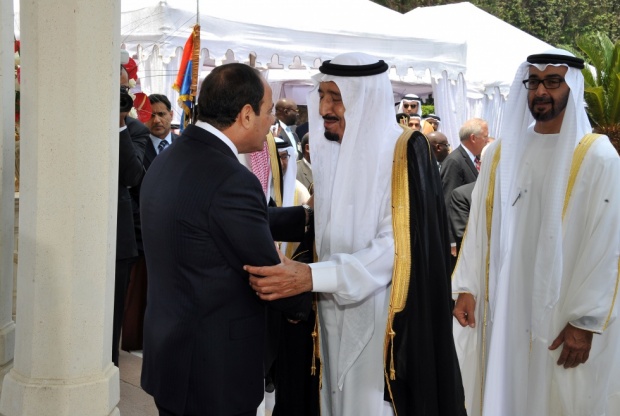JELAWAR: In single file with dogs sniffing ahead, a patrol of US paratroops and Afghan soldiers leaves a combat outpost for a mine clearing mission in southern Afghanistan.
"We are going to do a route clearance," says Captain James L. Thomasson, commander of Alpha Battery 1/320 of the 101st Airborne Division.
The 101st, known as the "Screaming Eagles," has one of the proudest and most decorated histories in the US military.
It took part in the D-Day landings in June 1944, the battle of Hamburger Hill in Vietnam, the invasion of Iraq, and is now on yet another American front line, this time high in the mountains of central Asia.
Nine years into the war in Afghanistan, the biggest killers of foreign troops in the country are improvised explosive devices (IEDs), cheap, crude, easily fashioned by Taliban fighters and devastatingly effective.
Buried by roadsides or hidden and detonated by booby traps, timers or remote control, IEDs have killed hundreds of people and inflicted life-shattering injuries on many more.
Washington is spending billions to try to counter the threat, and it is for Thomasson and his men to put the initiative into effect on the ground.
The soldiers’ camp, named Combat Outpost Nolen after a solider killed in battle, is on the edge of the village of Jelawar in the Arghandab valley in Kandahar province, the birthplace and stronghold of the Taliban.
Before they have progressed very far in an alley dubbed "IED Lane," Staff Sergeant George Robertson directs the Afghan soldiers.
"Keep five meters distance between you," he orders.
The dog handler suddenly raises his arm, fist closed, to order the patrol to stop.
The men freeze, the black Labrador circles around one spot, sniffs, looks back at its master and sits wagging its tail.
"IED! Everyone moves back!" says the handler.
"We are 600 meters from the Taliban. They have built a defensive belt of IEDs around their positions," says Major Tom Burell, adding that "60 to 65 percent of our casualties come from IEDs".
The bomb disposal experts are called in, led by a woman in her twenties, her hair tied in a bun under her helmet.
She crawls to about 50 meters (yards) from the point marked by the dog as the team prepares the robot that will neutralize the bomb, an 82mm mortar shell rigged with a detonator and trigger mechanism.
In the heart of the Taliban’s powerbase, the battle to win "hearts and minds" is no easy matter.
"We can’t leave the camp without the Taliban knowing. They have spotters everywhere. What we call the ’10-dollar Taliban,’ they only do it for the money," Thomasson says.
"We found hundreds of IEDs. A very small percentage has been pointed to us by the population," says battalion commander Lieutenant Colonel David Flynn.
To the south of a canal, the Taliban watch the scene.
"I see movement, I see movement," an Afghan soldier shouts in Pashtu, the local language.
Draped with cartridge belts and wearing a red shirt and black beret, he resembles a South American revolutionary as he releases a burst of machine-gun fire and the American paratroops activate their grenade launchers.
Explosions resound and the captain barks out orders: "A little more to the left. A little more to the right!"
"He is down, he is down," shouts Sergeant Rick McClain. "Let’s go get him."
At the spot, behind a low wall and a loophole, the soldiers find a lighter, bloodstains and a shoe.
Orchards of pomegranates spread as far as the eye can see.
"We know you are hiding and that you are wounded," shouts a translator.
"Come out and you will be looked after." But the rebel does not show himself.
"Go back," says the captain.
"I took the abandoned shoe, and will go in search of Cinderella in the village," jokes Sergeant McClain.
Š Θ
Θ
#
#
image description
#
#
image description

